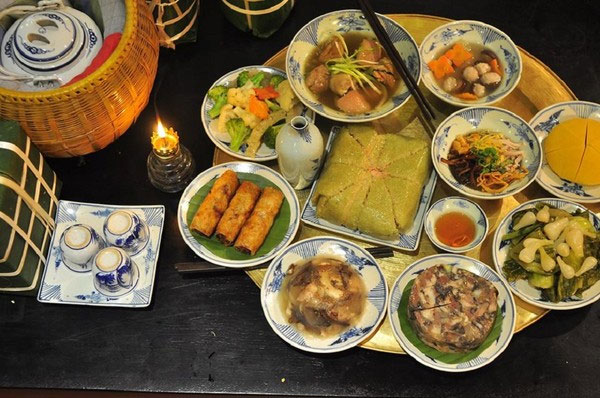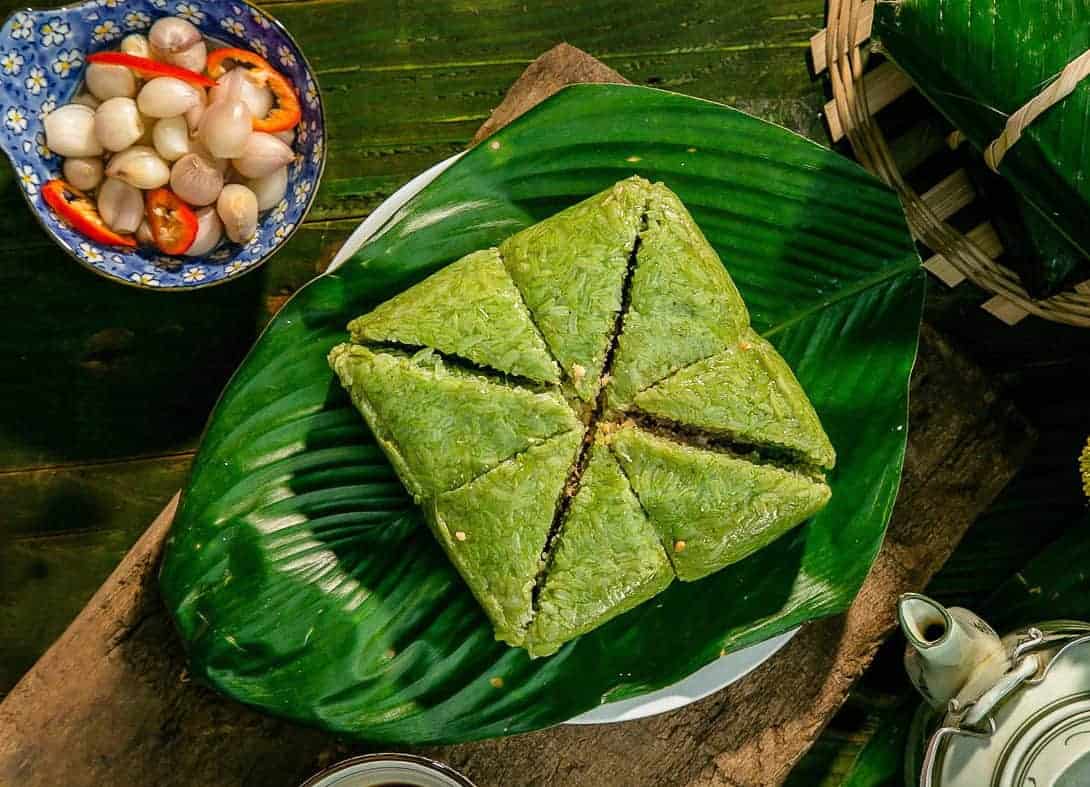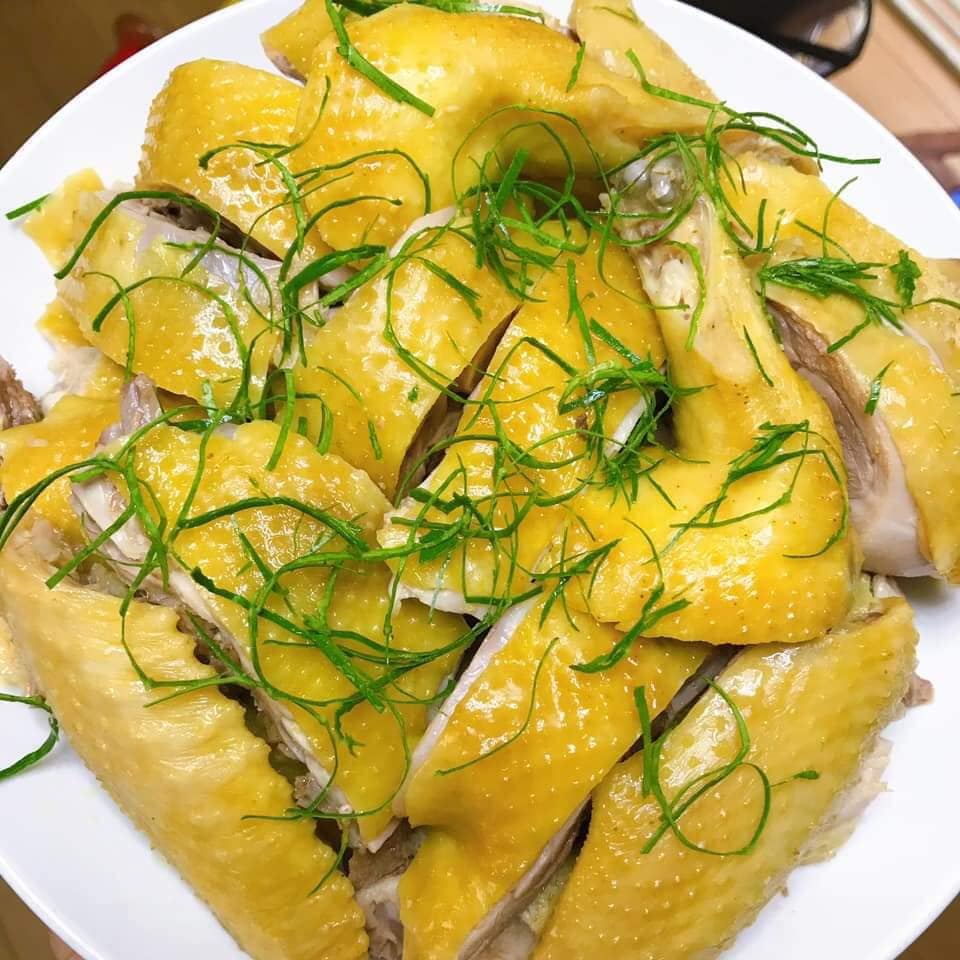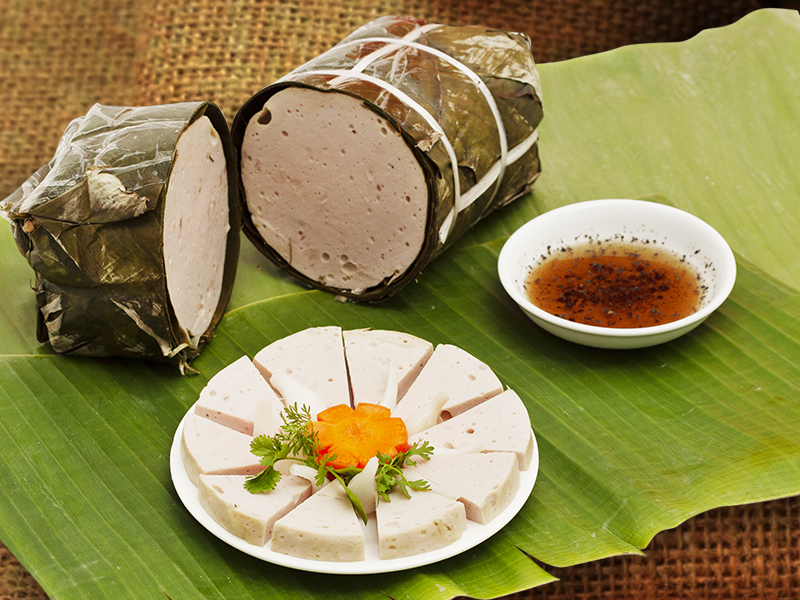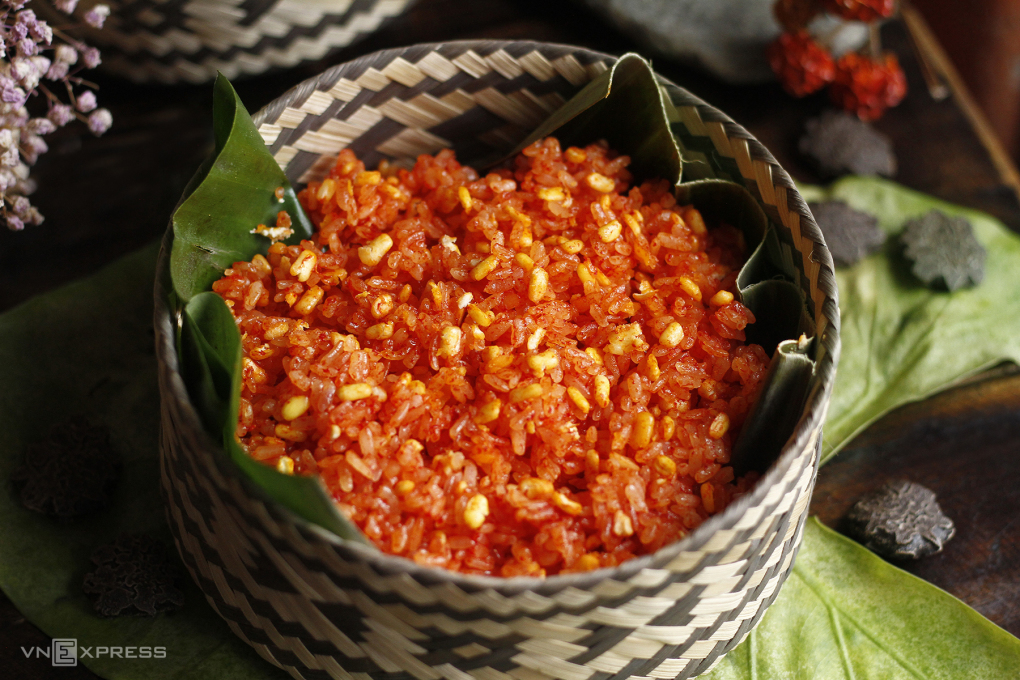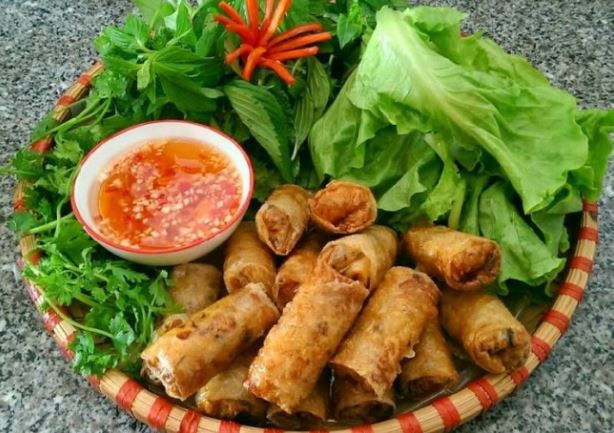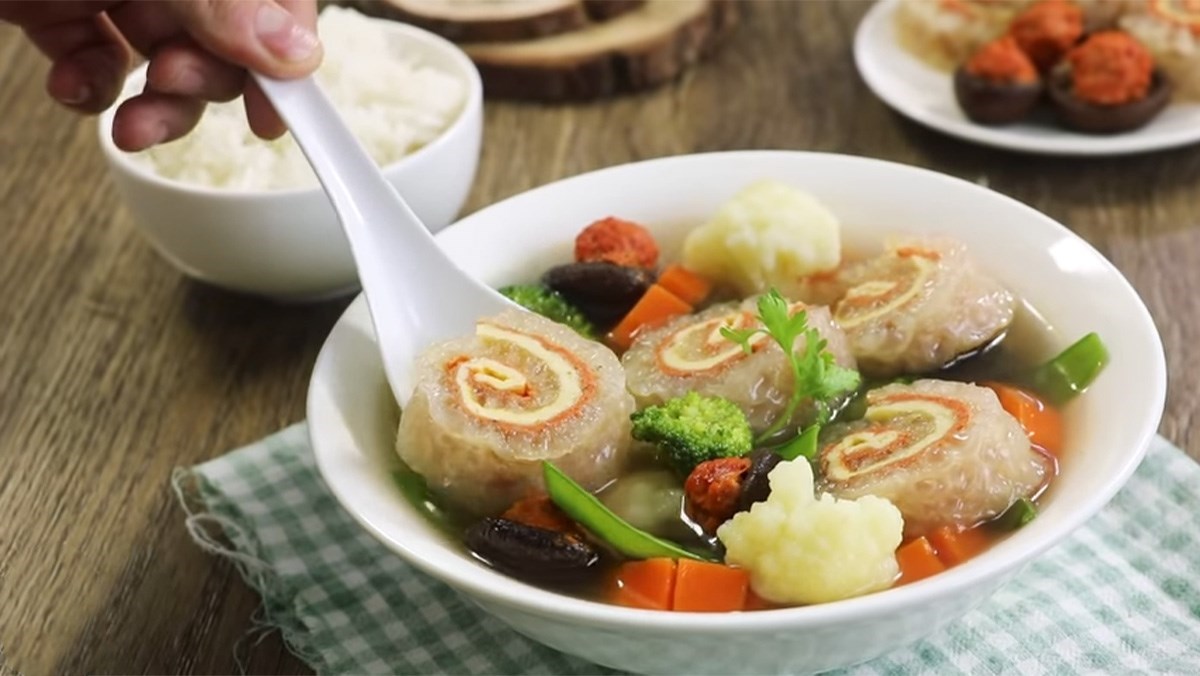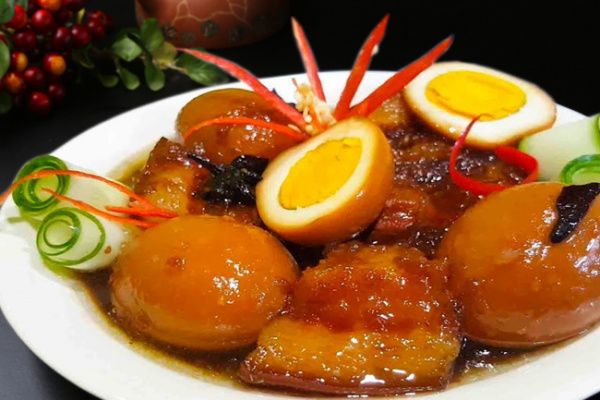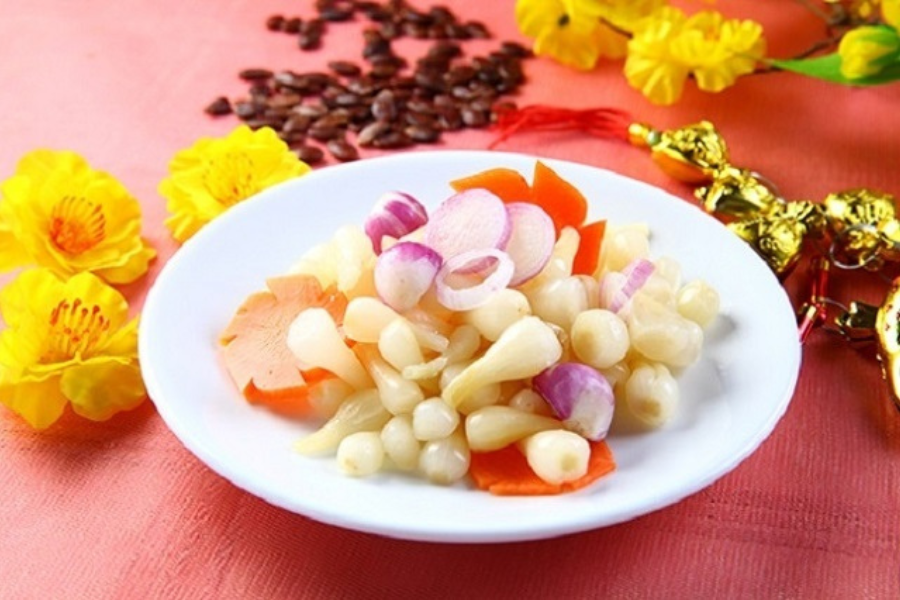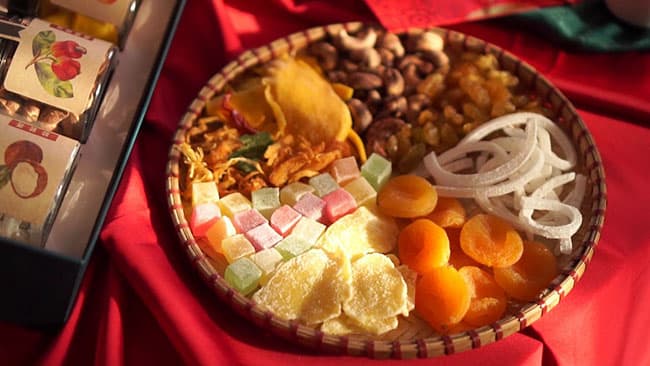Vietnamese New Year is known as Tet, Tet Nguyen Dan, or Lunar New Year in Vietnam. It is the most important and traditional festival and the longest holiday in the year in Vietnam. Tet is the family reunion occasion for all family members who are studying/ working/ living far from their hometown to come back to visit each other.
The Vietnamese New Year is a vital mark for the passing old year and upcoming new year and always includes a bunch of activities and traditions from the end of the lunar December until the middle of the lunar January. Among them, preparing and cooking traditional food to give to the ancestor’s altar to show gratitude and feast on family members, relatives, and guests in the new year is an unmissable tradition.
Each region in Vietnam may have different traditional dishes with distinct tastes. Northern cuisine exudes a flavorful and rustic taste, Central cuisine features a spicy taste, and Southern cuisine stands out with a sweet and diverse flavor. When you come to Vietnam during the Lunar New Year, whether you stay in which region, Vietnamese traditional food promises you a unique and unforgettable culinary experience.
Let’s take a look at Some Traditional Foods for Vietnamese New Year that you may want to try on this special festival.
Banh Chung / Banh Tet (Vietnamese square sticky rice cake)
Banh Chung and Banh Tet are both traditional dishes made from glutinous rice during the Vietnamese New Year. Banh Chung is square and is more popular in the North while Banh Tet is cylindrical and renowned in the Central and Southern regions. These cakes symbolize the earth and express respect for the sky, ancestors, and the water rice culture of Vietnam. Normally, each family would make their Banh Chung and Banh Tet by themselves. Since there are many steps, many family members would gather to prepare and make the cake together, making a very vibrant and bonding activity before Tet. All explains why these cakes are regarded as the spirit of Tet.
Banh Chung and Banh Tet are made from high-quality glutinous rice for better smell and preservation, cooked and crushed mung beans, sliced pork belly, onions, black peppers, and other seasonings. All ingredients are wrapped in “dong” leaves or fresh banana leaves with the rice placed on the outside and the other ingredients placed in the middle. Cakes are boiled for 12 – 14 hours and can be stored for 7 – 10 days depending on the weather conditions of each region. Banh Chung and Banh Tet is an indispensable dish in every meal during Tet.
Ga luoc (Boiled chicken)
Ga luoc or boiled chicken is a very simple dish and can be seen in daily meals of Vietnamese. However, it is also a very nutritious dish that expresses fullness and well-being so it is always used as an offering to ancestors on any Vietnamese celebrations including Tet.
Chicken for Tet is usually well-selected. They must be healthy roosters and nicely decorated after being cooked to present on the ancestor’s altar. While serving, the chicken will be cut into small pieces and neatly presented on the plate.
Gio lua (Vietnamese sausage)
Another common dish on Tet feasts is Gio lua or Vietnamese sausage. It is made from finely milled pork or beef, wrapped in fresh banana leaves, and steamed for around 40 minutes until well cooked. Gio lua is best served with sticky rice, banh chung/ banh tet, banh mi, or steamed rice.
You can also see another version called Gio thu which is made from pig’s head meat such as ear, nose, and cheek and wood fungus. Gio lua can be served hot or cold while Gio thu is always served cold to ensure the connections of the ingredients. Gio is also cut into small pieces (usually triangle shapes) and presented as a flower on a plate while serving.
Xoi gac (“Gac” sticky rice)
Vietnam is famous for many kinds of sticky rice but “gac” sticky rice is specially selected for Tet. Gac is a kind of fruit that creates a natural red color for food and in Vietnamese perception, red brings good luck, goodness, and fulfillment. On New Year’s Eve or the first day of the lunar new year, Vietnamese often prepare a plate of Gac sticky rice to send to ancestors with the wish to receive good fortune and happiness throughout the year.
Nem ran / Cha gio (Deep fried spring rolls)
Deep-fried spring rolls are called Nem ran in the North and Cha gio in the South of Vietnam. It is one of the most favorite dishes on special occasions, especially on family reunion days like Tet. It is not only easy to make but also very delicious.
Spring rolls are made from a variety of ingredients to the liking of the cook. However, the most traditional dish includes chopped meat (mainly pork or beef), chopped shrimp, white onion, green onion, food ear mushroom, shitake mushroom, bean sprout, egg, and seasoning such as salt, black pepper, fish sauce,… Ingredients are mixed well and wrapped in moistened dry rice paper (“banh trang” in Vietnamese) and deep fried in the boiling oil. Nem ran / Cha gio is better when served with some fresh lettuce and dipping sauce.
Canh bong (Vegetables soup with pig skin)
More popular in the North and especially in Hanoi, Canh bong is usually included in the meal on Tet thanks to the cool and sweet taste of the broth harmoniously accompanied by fatty and crispy pig skin, flavorful meatballs, and shrimp. Besides, there are also mushrooms, and some vegetables beautifully carved such as carrots, peas, broccoli, onion, and kohlrabi, creating an eye-catching dish in the Tet feasts.
Thit kho trung (Braised pork with egg)
A meal on Tet cannot miss a bowl of braised pork and egg. This traditional dish is familiar in the South, but nowadays can be found in many families in the North, even in daily meals.
Pork for this dish must be pork belly with a perfect combination of lean and fat. After being cut into large cubes, pork will be marinated with fish sauce, sugar, garlic, black pepper, and coconut water. Boiled eggs are peeled and put into the pot. All ingredients are cooked for a few hours until they become very soft. This dish is best served with steamed rice and some sweet and sour pickled onions.
Dua hanh / Cu kieu (Pickled scallion)
One of the most rustic but indispensable dishes is Dua hanh and Cu kieu. If Dua hanh is rounder, bigger, and whiter, Cu kieu is slim, long, and has a bit of a purple color. Both are crunchy and have a sour and a bit sweet taste after being pickled and become an important dish to reduce the greasiness among a feast full of meaty and protein dishes on Tet holiday. In the South, pickled scallion will be added to some dried shrimp to boost the flavor of the dish.
Mut (Candied fruits)
A house will be filled with a Tet atmosphere with a tray of “mut” or jam. It is not a usual jam in liquid that people often use with bread. Vietnamese jam is dried fruit or candied fruit that is placed on the tea table to welcome guests at the beginning days of the year. Mut and some other kinds of nuts or candies are not only a good snack for early-year conversations but also make the house more intimate and cozy. There are many kinds of mut made from coconut, tamarind, ginger, carrot, kumquat, pomelo peel, etc. Nuts can be pumpkin seeds, sunflower seeds, watermelon seeds, pistachios, cashews, etc.
